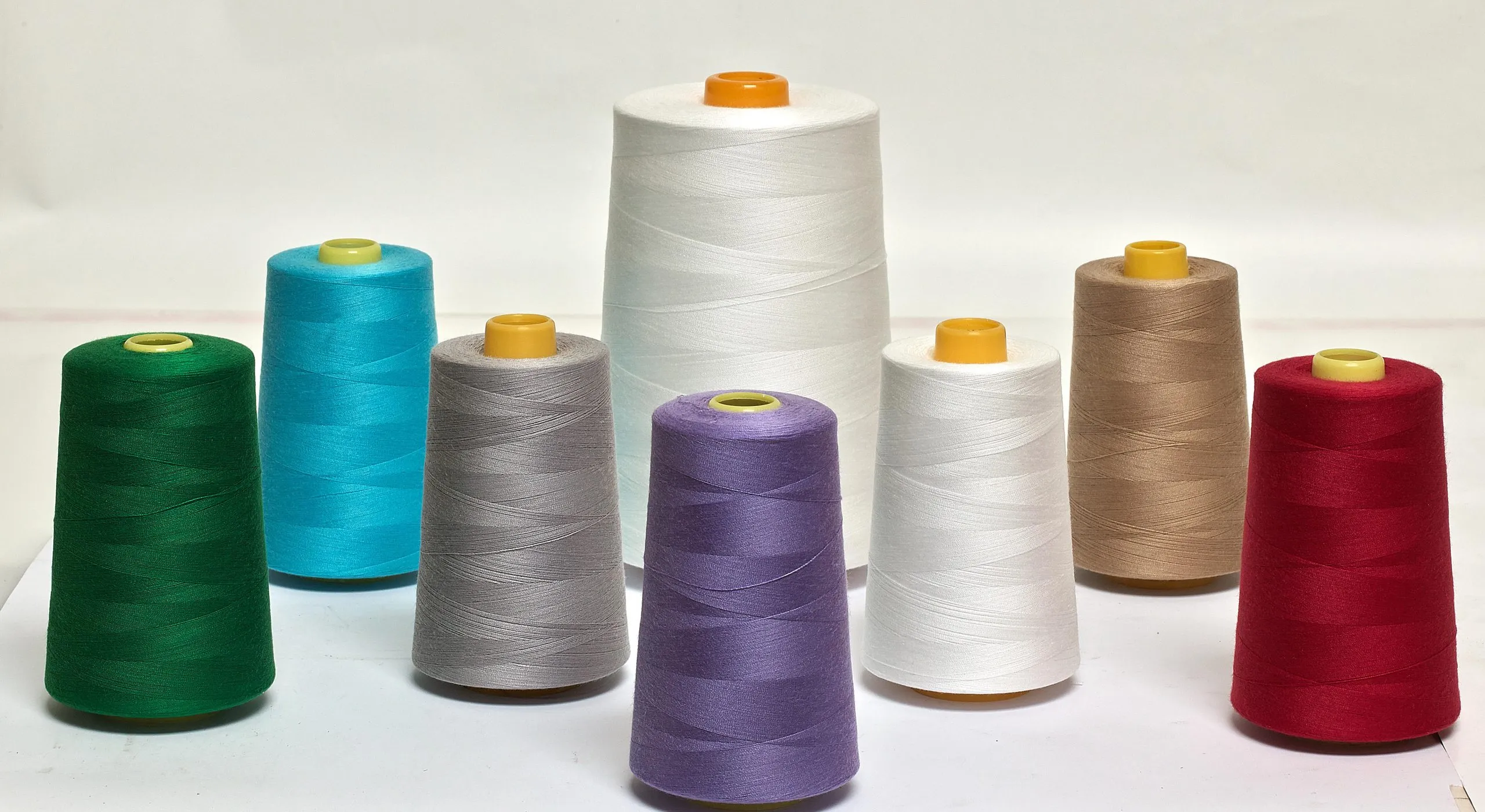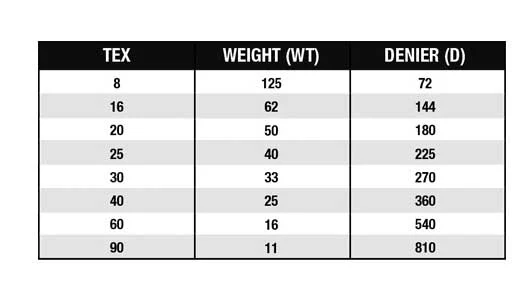
You need fabrics that perform: TC fabric a polyester-cotton blend gives you durability, easy maintenance and resistance to wrinkles and shrinkage, ideal for uniforms and workwear; however, be aware it can have reduced breathability and occasional static buildup that affect your comfort in hot or dry conditions.
What is TC Fabric
TC fabric, short for Terylene Cotton or Tery-Cotton, is a popular textile blend that combines the durability of polyester with the comfort of cotton. It’s widely used in workwear, uniforms, and home textiles due to its long lifespan, easy care, and resistance to wrinkles and shrinkage. By balancing the properties of both fibers, TC fabric offers practical advantages for both industrial and everyday clothing.
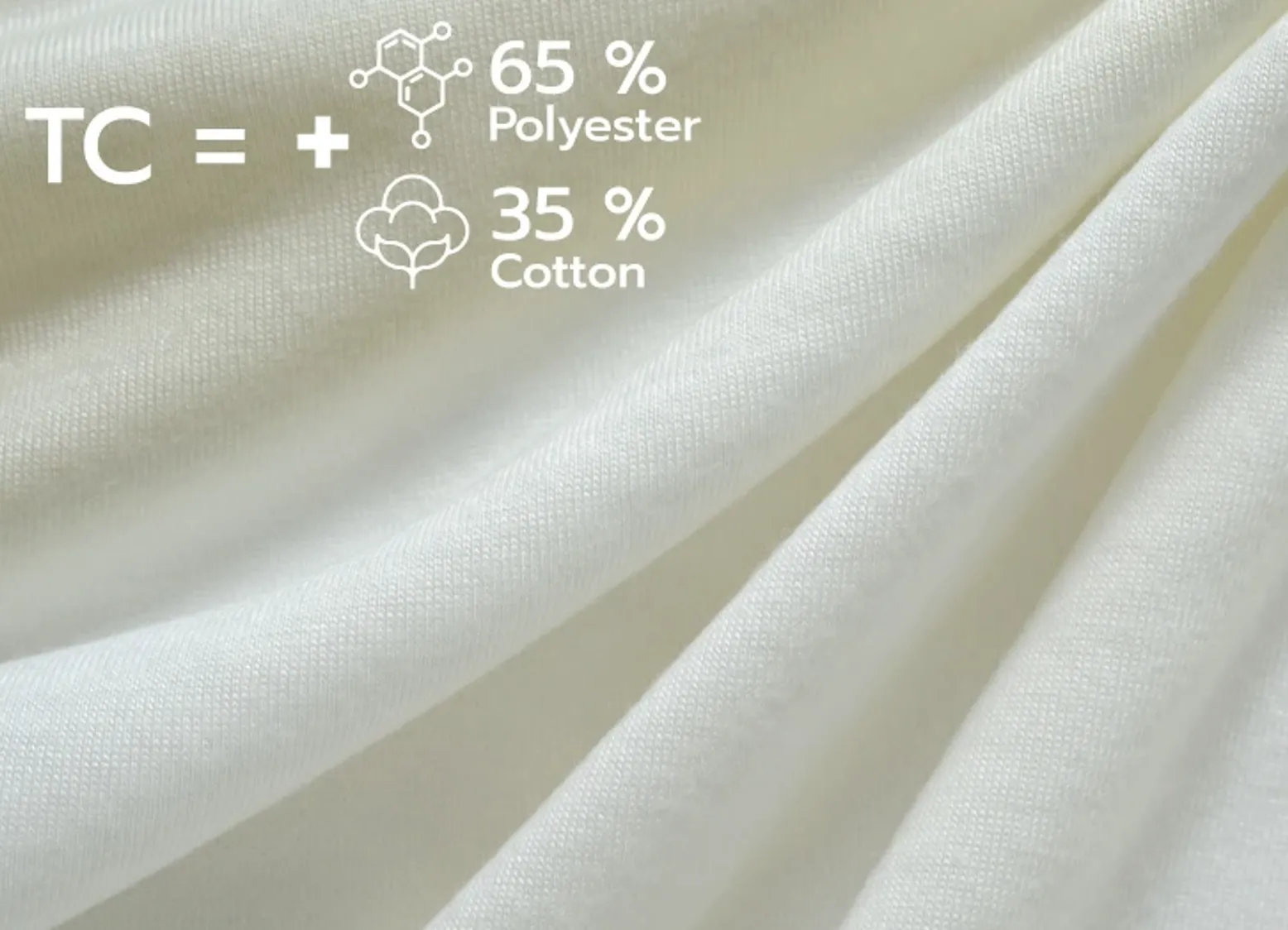
You can trace TC’s lineage to mid-20th century fiber innovation: Terylene (a polyester) was commercialized in 1941, and by the 1950s–60s polyester–cotton blends entered mass production as industries sought economical, durable uniforms and workwear that survived frequent laundering.

Over the following decades you’d see rapid adoption across healthcare, hospitality, and manufacturing because TC reduced replacement costs and maintenance time; today manufacturers still favor the 65/35 standard for balance of durability and comfort, and many commercial laundries report garments retaining shape and color through 200+ wash cycles, which explains TC’s persistence in large-scale apparel programs.
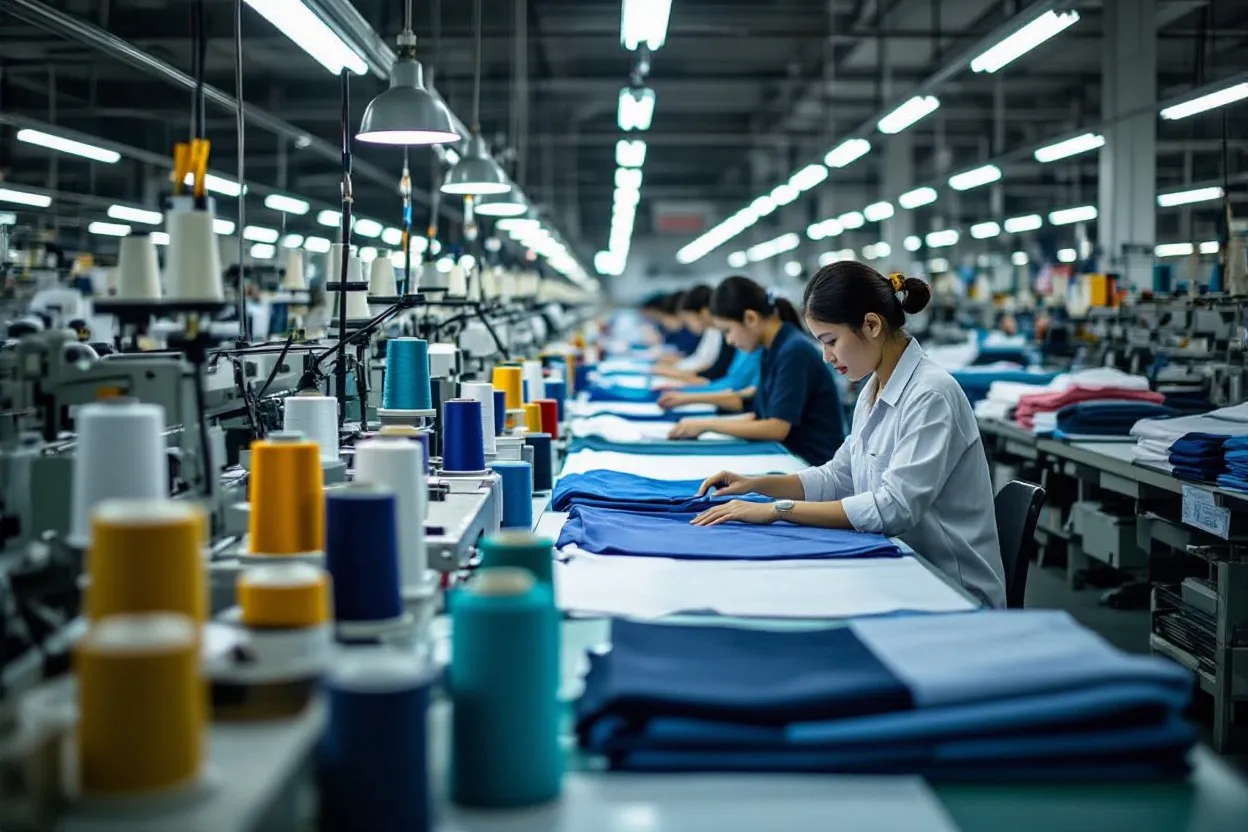
Composition and Structure
TC fabric is usually made from 65% polyester and 35% cotton, though the ratio can vary depending on the intended use. The polyester content gives it strength, wrinkle resistance, and color retention, while the cotton adds softness and breathability. The result is a fabric that feels smoother than pure polyester yet more resilient than 100% cotton.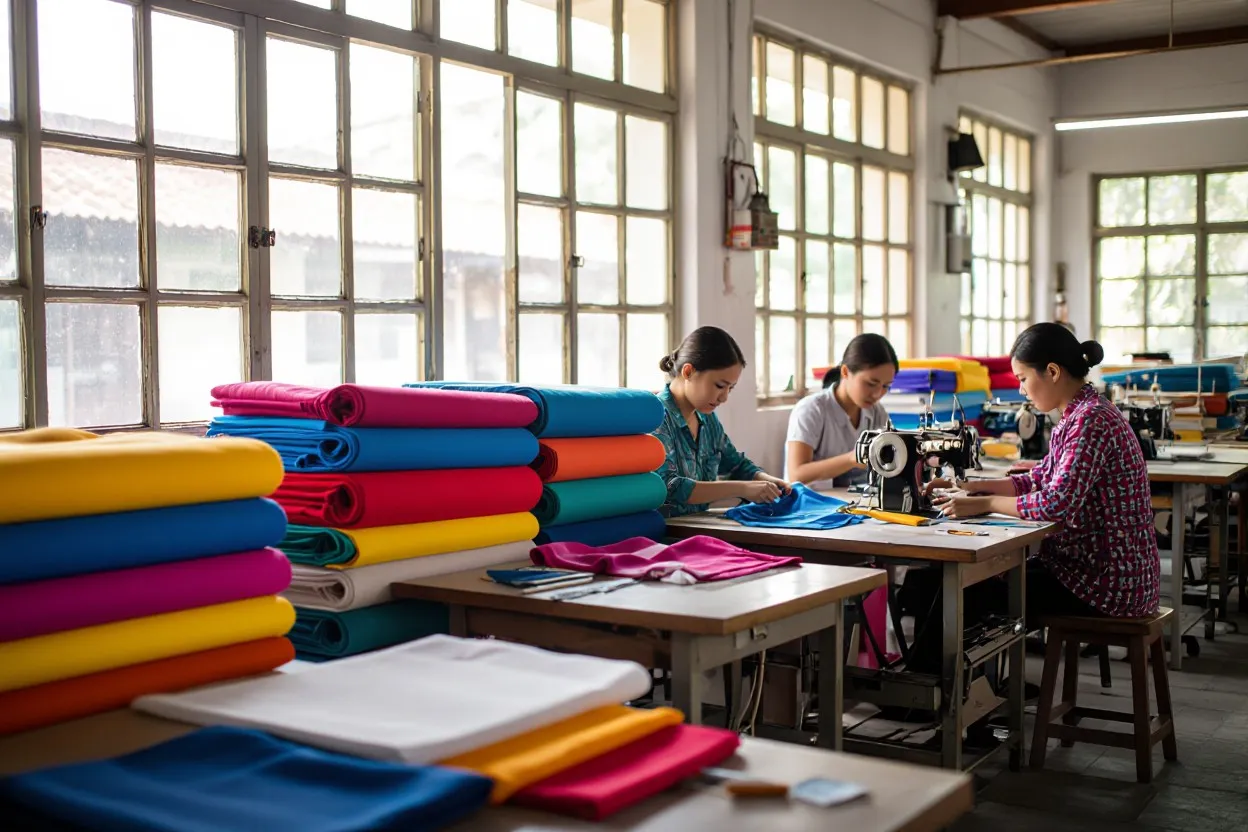
| Feature | Description |
|---|---|
| Fiber Composition | Polyester and cotton blend (commonly 65/35) |
| Texture | Smooth, slightly crisp hand feel |
| Durability | High – resistant to tearing, stretching, and abrasion |
| Wrinkle Resistance | Excellent – maintains shape after washing |
| Colorfastness | Very good – colors stay bright and vivid |
| Shrinkage | Minimal, thanks to polyester fibers |
| Breathability | Moderate – less airy than cotton but still comfortable |
Fiber Content Breakdown
Most TC blends are engineered around a standard 65% polyester / 35% cotton, but you’ll also see 50/50, 60/40 and 80/20 variants. Polyester supplies strength, wrinkle resistance and colorfastness, while cotton contributes softness, loft and moisture absorption. If you inspect a work-shirt or uniform label, that percentage tells you whether the garment leans toward durability or comfort and sets expectations for care, breathability and longevity.
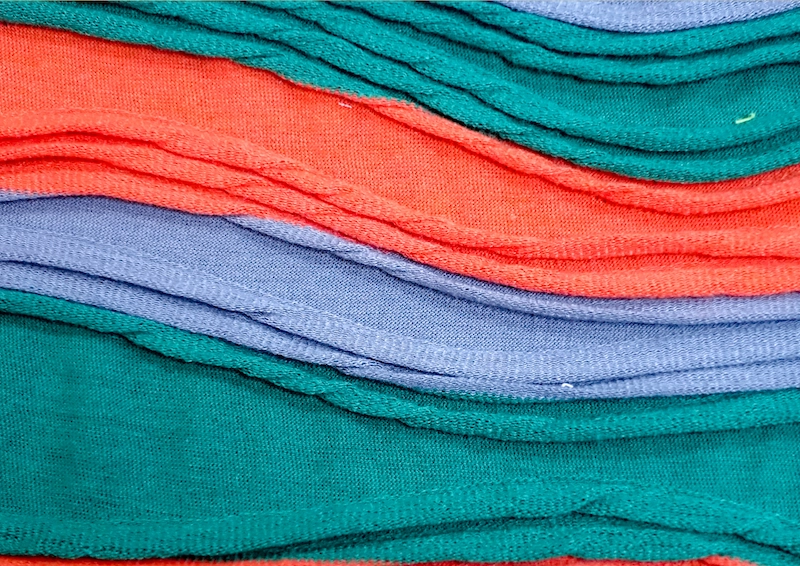
Influence of Fiber Ratios on Fabric Properties
Higher polyester ratios ramp up tensile strength, abrasion resistance and dimensional stability, so you get less shrinkage and faster drying; higher cotton ratios boost moisture-wicking, hand feel and breathability but raise pilling and shrinkage risk. You’ll find 65/35 used for general uniforms, 80/20 for heavy-duty workwear, and 50/50 or 60/40 in garments where comfort in warm climates matters more.

Digging deeper, you can quantify differences: cotton’s moisture regain is about ~8.5% versus polyester’s ~0.4%, which explains why cotton-rich blends feel cooler and manage sweat better. If you launder non–pre-shrunk cotton blends, expect up to 2–5% dimensional change depending on construction and finishing. For specification decisions, prioritize polyester when you need color retention and low maintenance, and increase cotton when you want improved thermal comfort and skin feel; lab testing for abrasion (Martindale) and shrinkage helps you validate the chosen ratio for your end use.
Strength and Durability
You’ll find TC’s typical 65/35 polyester/cotton blend gives it higher tensile strength and abrasion resistance than pure cotton, so garments hold up under repeated wear and industrial laundering; that’s why schools, factories and hospitality sectors favor TC for uniforms and workwear that must survive frequent wash cycles without tearing or excessive pilling.
Comfort and Breathability
The cotton in TC provides softness and basic breathability, but the polyester fraction reduces airflow compared with 100% cotton, so you’ll feel warmer in humid conditions; TC works best when you need a balance of comfort and resilience rather than maximum cooling performance.
Gauges and weight matter: a 180–220 GSM 65/35 TC offers reasonable moisture management—polyester wicks moisture to the surface while cotton absorbs it—so you get moderate drying speed without the clamminess of pure polyester; choose lower GSM and higher cotton content for hotter climates.
Color Retention and Fade Resistance
Because polyester holds disperse dyes well, TC maintains vivid colors far longer than pure cotton; you’ll notice less fading from sunlight and repeated laundering, which is why branded uniforms and corporate wear often use TC for consistent appearance over time.
In practice, manufacturers use union or piece-dyeing techniques (disperse/reactive systems) to dye blends uniformly; pair that with mild detergents and cold-to-warm washes and you’ll preserve shade—avoid chlorine bleach, which accelerates fading and fiber damage in blended fabrics.
Pros and Cons TC Fabric (Poly-Cotton)
Advantages
- Long-lasting and strong: The high polyester ratio provides toughness that withstands frequent washing and heavy use.
- Low maintenance: TC fabric dries quickly and rarely needs ironing.
- Good color retention: Colors don’t fade easily, even under sunlight or repeated laundering.
- Economical: Less expensive than 100% cotton but offers better durability.
- Shape stability: Retains its form well, ideal for uniforms or garments that need a crisp look.
Limitations
- Reduced breathability: Polyester fibers limit airflow, making TC less cool than cotton in hot climates.
- Synthetic touch: The fabric may feel less natural or soft, especially at higher polyester ratios.
- Static buildup: The polyester component can generate static electricity in dry conditions.
Common Uses
| Application | Purpose / Reason |
|---|---|
| Uniforms | Keeps its shape and color through long wear and frequent washing |
| Workwear | Durable and resistant to stains or damage |
| Bedsheets & Pillowcases | Easy to wash and dry, smooth surface |
| Aprons | Withstands moisture and daily use |
| Industrial Clothing | Protects against wear, tear, and dirt in harsh environments |
Workwear and Uniforms
You’ll find TC fabric in factory overalls, hotel and restaurant uniforms, school attire, and medical scrubs because a standard 65/35 polyester/cotton blend with a weight of 180–260 gsm delivers the durability you need; garments can often withstand 30–60 industrial wash cycles while keeping a crisp appearance, though you should note the reduced breathability can increase heat stress in high-temperature environments.
Home Textiles and Bedding
You’ll commonly see TC used for sheets, pillowcases, duvet covers, and curtains where colorfastness and low-maintenance care matter; sheets in a 65/35 blend often sit in the 180–300 thread count range, offering smoother hand-feel than pure polyester while being cheaper and easier to launder than 100% cotton.
When you choose TC for bedding, expect fast drying, minimal shrinkage, and good wrinkle resistance—ideal if you run a guesthouse or want low-effort home laundry. You can machine wash at 40°C, tumble dry low, and the fabric accepts reactive and disperse dyes well, so prints stay vibrant; consider a softening finish if you want extra hand-feel or a flame-retardant treatment for commercial/regulated uses.
Other Industrial Uses
You’ll see TC in upholstery, mattress ticking, industrial curtains, aprons, promotional banners, and light-duty tarpaulins where cost-efficiency and dimensional stability matter; manufacturers often use heavier weights (200–300 gsm) for upholstery and lighter weights (120–180 gsm) for liners and banners, making TC a versatile, cost-effective choice.
For tougher applications you can apply coatings (PVC, PU) or finishes (water-repellent, anti-microbial, flame retardant) to extend outdoor life and meet safety standards; TC accepts screen and digital printing well and, with increased polyester content, gains tensile strength and UV resistance—but if your use involves open flames or intensive outdoor exposure, plan on additional protective treatments to mitigate the fabric’s inherent limitations.
Conclusion / Final Words
TC fabric represents the perfect middle ground between comfort and strength. It’s a go-to choice for industries and institutions that value neatness, resilience, and easy maintenance. While it may not feel as breathable as pure cotton, its practicality, durability, and affordability make it a smart choice for both workwear and home textiles.
FAQs TC Fabric (Poly-Cotton)
What is TC fabric and why is it commonly used?
TC (Terylene Cotton or Tery-Cotton) is a blended textile combining polyester and cotton. It balances polyester’s strength, wrinkle resistance and color retention with cotton’s softness and breathability, making it ideal for workwear, uniforms, and home textiles that require durability, easy care and a neat appearance.
What is the typical composition of TC fabric and how do different ratios affect performance?
The common blend is 65% polyester and 35% cotton, though ratios vary by use. Higher polyester (e.g., 80/20) increases strength, wrinkle resistance and colorfastness but reduces breathability and a cotton-like feel. Higher cotton (e.g., 50/50) improves softness and comfort but lowers durability and shrink resistance.
What are the main advantages of TC fabric?
Key benefits include long-lasting strength that withstands frequent washing, low maintenance because it dries quickly and seldom needs heavy ironing, good color retention under sunlight and repeated laundering, cost-effectiveness compared with pure cotton, and shape stability that keeps garments looking crisp—features valuable for uniforms and industrial apparel.
What limitations should I expect with TC fabric?
Limitations include reduced breathability compared with 100% cotton—making it less cool in hot climates—an occasionally synthetic or less natural hand feel at higher polyester ratios, and potential static buildup in dry conditions. These trade-offs come with the durability and easy-care benefits.
How should TC fabric be cared for to maximize lifespan and appearance?
Wash in warm or cold water with a mild detergent; avoid chlorine bleach to protect color. Tumble dry on low or hang to dry to limit heat exposure; remove promptly to minimize wrinkles. Iron on medium if needed; use a protective cloth for higher-temperature finishes. Treat stains promptly and consider anti-static dryer sheets or fabric softener alternatives to reduce static.
What are the most common uses for TC fabric and why is it preferred for uniforms and workwear?
TC is widely used for uniforms, work shirts, industrial garments, schoolwear and some home textiles. It’s preferred because it endures heavy wear and frequent laundering, keeps a neat, wrinkle-resistant look, holds color well, and is economical for large-scale procurement where appearance and durability matter.

